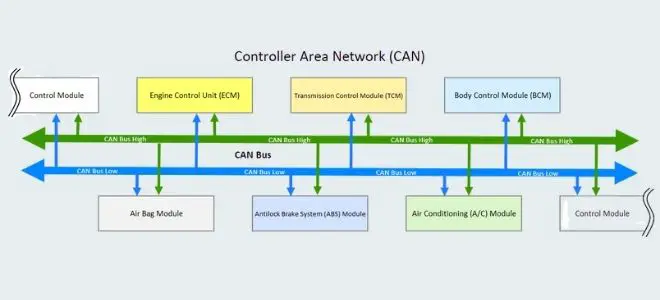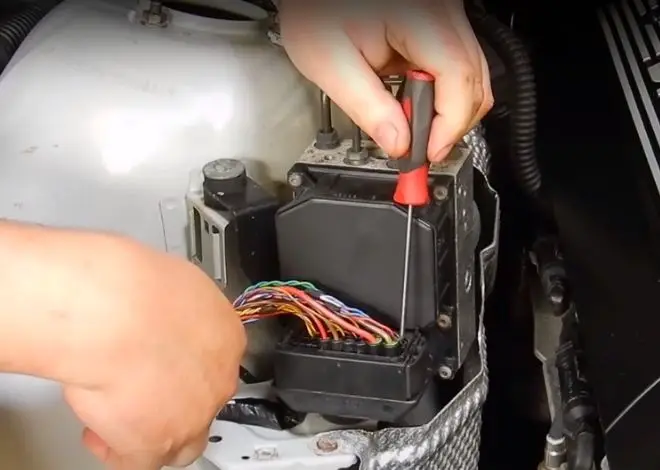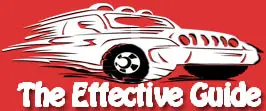Last Updated on May 21, 2025
If you’re a car owner, you may have come across OBD2 fault codes during a diagnostic scan. These codes are essential in identifying issues within your vehicle’s systems. One of the lesser-known yet significant trouble codes is the U0002 code. But what does it mean? Why does it appear? And most importantly, how can you fix it?
In this guide, we’ll break down everything you need to know about the U0002 code—its meaning, possible causes, symptoms to look out for, and actionable steps to resolve it. Whether you’re a DIY car enthusiast or just want to be more informed before visiting a mechanic, this article will help you understand the U0002 trouble code in simple terms.
✅ Related Read: U0100 Code – Lost Communication with ECM/PCM “A”
What Is the U0002 Code?
The U0002 code is a generic communication fault code related to your vehicle’s Controller Area Network (CAN bus). The CAN bus system allows various electronic modules in your vehicle—such as the engine control module, transmission module, ABS, and infotainment systems—to communicate with each other without requiring a central computer.

The U0002 code specifically indicates “High-Speed CAN Communication Bus (+) Off”. In simple terms, this means the high-speed data lines (called CAN High) responsible for critical communication between modules are not functioning as expected. This can disrupt key functions in your car.
Understanding CAN Bus Basics
To understand the U0002 code, it’s important to grasp how the CAN bus works. Your vehicle is equipped with a network of ECUs (Electronic Control Units) that talk to each other via the CAN system. There are two main wires in this system:
- CAN High (CAN H): Carries data when voltage increases to around 3.75V.
- CAN Low (CAN L): Carries data when voltage drops to around 1.25V.
- Idle Voltage: When inactive, both lines sit around 2.5V.
If the CAN High wire fails or doesn’t send signals as expected, it triggers the U0002 fault code.
⚠️ Want to know more about common vehicle issues? Check out our article on Bad Starter Symptoms for early warning signs.
Why the U0002 Code Is Important
Ignoring the U0002 code could lead to severe communication breakdowns between vital modules in your vehicle. Modern cars rely heavily on data exchange between systems for real-time performance, diagnostics, and safety features. If communication fails due to a CAN High issue, it could result in:
- Disabled safety features
- Malfunctioning dashboard displays
- Loss of engine power
- Unexpected behavior of modules like ABS or transmission control
Because of this, it’s crucial to understand the symptoms, causes, and proper troubleshooting steps for resolving the U0002 code quickly and correctly.
What Causes the U0002 Code?
Understanding the root cause of the U0002 code is key to resolving it quickly and avoiding recurring issues. Since this error is linked to communication on the CAN High line, most problems stem from wiring, connectivity, or malfunctioning control modules.
Common Causes of the U0002 Code:
- Faulty Control Module
- A damaged or failing module, such as the Engine Control Module (ECM) or Transmission Control Module (TCM), may no longer send or receive signals through the CAN bus, causing the U0002 code to appear.
- Damaged or Corroded Wiring
- Wiring harnesses related to the CAN High line may become frayed, shorted, or corroded over time, disrupting communication between modules.
- Open or Short Circuits
- If the CAN High wire becomes open (disconnected) or shorted (touching another wire or ground), it triggers the code due to interrupted data flow.
- Loose or Poor Electrical Connections
- Poor contact in connector pins, broken plugs, or high resistance in wiring circuits can interfere with signal transmission.
- Battery or Ground Issues
- A weak or unstable battery, or poor grounding, can cause voltage fluctuations that affect CAN bus communication.
- Interference from Aftermarket Devices
- Improperly installed GPS trackers, alarms, or infotainment systems may tap into the CAN lines and cause communication errors.
⚡ Tip: If you’ve recently installed a new electronic device or visited a mechanic, make sure they haven’t accidentally disturbed your vehicle’s wiring harness.
Symptoms of a U0002 Code
The U0002 code doesn’t always come with dramatic symptoms, but the effects can become serious if ignored. Watch for these warning signs:
🚨 Common Symptoms:
- Check Engine Light or Communication Fault Warning on your dashboard
- Failure of One or More Electronic Systems
- This could include loss of cruise control, infotainment issues, or electronic brake failure
- Unresponsive or Erratic Module Behavior
- For example, the ABS, TCM, or ECM may act irregularly
- Vehicle Won’t Start or Stalls
- In rare cases, complete communication failure could prevent the vehicle from starting
- Slow or Delayed Engine Response
🚗 Curious about similar issues? Learn how to test a car battery with a multimeter to rule out low-voltage errors affecting the CAN system.
Diagnostic Trouble Codes (DTCs) and U0002
Sometimes, the U0002 code doesn’t come alone. It may be accompanied by other DTCs like:
- U0100 – Lost Communication with ECM/PCM “A”
- U0121 – Lost Communication with Anti-lock Brake System (ABS) Control Module
- U1000 – Class 2 Communication Malfunction
📌 In these cases, treat the U0002 code as a priority issue, since it can interfere with communication between all systems.
How to Diagnose and Fix the U0002 Code
When it comes to fixing the U0002 code, accuracy is everything. Rushing the repair process without a proper diagnosis can lead to wasted time and money. Below, we’ll guide you through the step-by-step process to diagnose and fix this fault code, whether you’re a DIYer or a professional technician.
🛠️ Step-by-Step Troubleshooting Process
Step 1: Check for Technical Service Bulletins (TSBs)
Before anything else, search for TSBs related to your vehicle model and year. TSBs are published by manufacturers to inform mechanics about known issues and approved fixes. If a TSB exists for U0002, it may save you hours of trial and error.
📄 Helpful Resource: You can often find TSBs on manufacturer websites or forums dedicated to your car’s make and model.
Step 2: Use an OBD2 Scanner or Diagnostic Tool
Plug an OBD2 scanner into your car’s diagnostic port and check for trouble codes.
- If U0002 appears, look for companion codes such as U0100 or U0121.
- Clear the codes and see if they reappear.
- If they do, begin deeper diagnostic work.
🧰 Want to use a quality scanner? Check our review on Autel MK808 vs MX808 for tools that can read CAN-related codes.
Step 3: Perform a Visual Inspection
Physically inspect the CAN High and CAN Low wires and the control module connectors.
- Look for frayed wires, burn marks, pin corrosion, or loose plugs
- Use your vehicle’s wiring diagram to locate CAN bus lines
- Ensure all control modules are properly seated
Step 4: Check Resistance in CAN Bus
Using a digital multimeter, measure resistance between CAN High and CAN Low lines.
- The resistance should be around 60 ohms
- If the reading is much higher or lower, there’s likely a fault in the wiring or a failed module
Also, measure resistance to ground:
- Ground resistance should be 5 ohms or less
- If higher, you may have an open ground circuit, which can trigger the U0002 code
🔌 Not familiar with multimeters? Learn how to use one to test car components.
Step 5: Isolate and Test Modules
If all wiring checks out, the issue might lie in a faulty control module.
- Disconnect modules one at a time to isolate the one causing communication failure
- Re-scan for the U0002 code after each module is unplugged and reconnected
If the code disappears when a specific module is disconnected, that module may be faulty or interfering with CAN communication.
🧩 Optional: Use a CAN Bus Analyzer
For professionals or advanced DIYers, a CAN bus analyzer can help monitor communication in real time.
- This tool shows which modules are sending or failing to send data
- It helps detect intermittent faults that scanners might miss
Post-Repair Steps and How to Confirm the U0002 Code Is Resolved
Once you’ve diagnosed and repaired the issue, your job isn’t over. It’s important to verify that the repair has worked and ensure the problem won’t return. Below are post-repair steps to confirm success and protect against future CAN bus errors like the U0002 code.
Step 1: Clear All Codes and Reset the System
After completing repairs:
- Use your OBD2 scanner to clear the U0002 code and any other stored fault codes.
- This resets the vehicle’s ECU (Engine Control Unit) memory and prepares it for a fresh scan.
Wait a few minutes, then turn the ignition back on and check if any codes return. If the U0002 code stays gone, the initial issue may be resolved.
Step 2: Perform a Test Drive
Run your vehicle for at least 15–20 minutes under different driving conditions:
- City stop-and-go traffic
- Highway speeds
- Idle time
During the test drive, keep an eye on the dashboard. If the Check Engine Light stays off and no unusual symptoms occur, this is a good sign.
🚗 Related: If your vehicle fails to start or stalls, it may not always be a CAN issue. See our guide on Bad Clutch Master Cylinder Symptoms for other possible causes.
Step 3: Re-Scan for Stored or Pending Codes
After the test drive, connect your scan tool again and:
- Check for stored or pending fault codes.
- If the U0002 code is gone, and no companion codes are present, your repair was likely successful.
Step 4: Inspect Related Modules
Even if the code is gone, inspect the following components to prevent future U-code errors:
- Battery terminals and voltage levels
- Ground connections (especially to chassis and ECU)
- Connectors on all major modules (ECM, TCM, BCM, etc.)
- Aftermarket wiring or accessories—ensure they’re CAN-safe
💡 Pro Tip: If your car’s battery is over 3–4 years old or voltage readings are low, consider replacing it. A weak battery can cause CAN communication issues, including the U0002 code.
How to Prevent the U0002 Code in the Future
Preventing U0002 starts with routine maintenance and being mindful of your vehicle’s electrical health. Follow these tips:
- Avoid tampering with CAN bus wires when installing aftermarket products
- Use manufacturer-approved connectors and parts for electrical repairs
- Secure all wiring harnesses away from heat sources, moving parts, or sharp edges
- Scan your vehicle regularly to detect early signs of communication issues
- Ensure your vehicle’s battery and charging system are in good shape
🔋 Want more car care tips? Check out our guide on bad brake light switch symptoms that can cause electrical confusion similar to U-codes.
Vehicles Commonly Affected by U0002
While the U0002 code can occur in many modern vehicles, it’s commonly reported in:
- GM vehicles (Chevrolet, GMC, Cadillac, Buick)
- Ford (especially trucks with multiple control modules)
- Dodge and Chrysler models
- Nissan and Infiniti
- Some European models with extensive CAN architecture
If your vehicle is on this list and showing U-codes, pay special attention to your CAN wiring and modules.
Conclusion: Understanding and Fixing the U0002 Code
The U0002 code may not be as well-known as other OBD2 trouble codes, but it plays a critical role in your vehicle’s communication system. When this code appears, it signals a disruption in high-speed CAN bus communication, which can lead to unpredictable vehicle behavior, safety risks, or even failure to start.
By following a structured diagnostic and repair process, you can:
- Identify the cause (whether it’s a wiring fault, module failure, or poor ground connection)
- Use proper tools like a scan tool or multimeter to verify issues
- Clear the code and confirm with a test drive and rescan
Don’t ignore communication-related codes like U0002. Treat them as a high-priority issue, especially if other DTCs like U0100 or U0121 are also present.
🔧 Looking to understand more car error codes? Start with our in-depth guide on U0100 Code or U0001 Code Meaning and Fixes.
U0002 Code FAQs (Quick Reference)
Q1. What does the U0002 code mean?
It refers to “High-Speed CAN Communication Bus (+) Off” — a fault in the high-speed communication network in your car.
Q2. Is the U0002 code serious?
Yes. If left unaddressed, it may cause critical systems (like engine or brakes) to malfunction due to communication loss.
Q3. Can I still drive with a U0002 code?
If symptoms are minor, short-term driving may be possible, but it’s not recommended. Get it checked immediately.
Q4. How do I diagnose the U0002 code?
Use a scan tool, check for related codes, inspect CAN wiring, test resistance, and isolate any faulty modules.
Q5. Will clearing the code fix the problem?
No. Clearing the code without addressing the underlying issue will only make the warning disappear temporarily.
Internal Resources You May Find Helpful
- Symptoms of a Bad Starter
- Test Car Battery with Multimeter
- Bad Clutch Master Cylinder Symptoms
- Brake Light Switch Problems
- U0100 Code Meaning
Final Thoughts
Now that you’ve learned everything about the U0002 code, from its meaning and causes to step-by-step fixes and prevention tips, you’re better equipped to handle it confidently. Keep your vehicle in good electrical condition, scan regularly for DTCs, and never overlook the signs of CAN communication trouble.
If the U0002 code returns, seek professional help—especially for newer vehicles where modules are more interconnected and complex.
Kevin Nicholas is an automotive technician who is a genius at software and hardware-related issues. He manually tested more than a hundred OBD scanners and gave his honest opinion on whether the device was worth the money or not. His in-depth OBD review articles help people choose the right product, whether it is a European, American, or Asian vehicle. He completed his Automotive Specialized Training Course at Universal Technical Institute and has more than 15 years of experience in the field.
